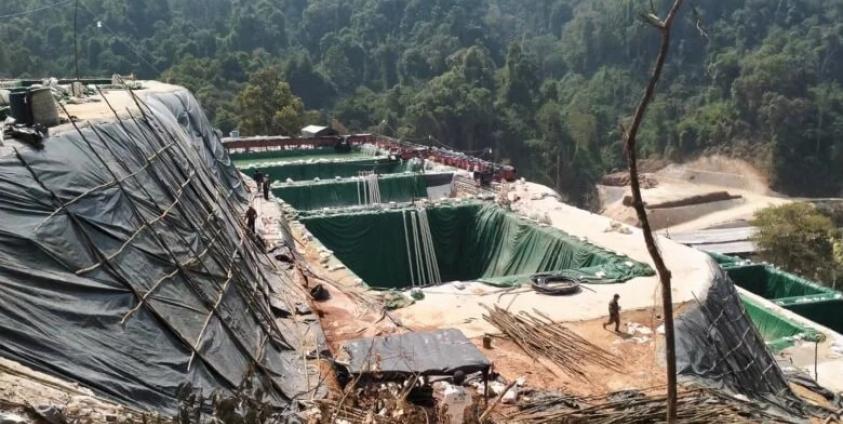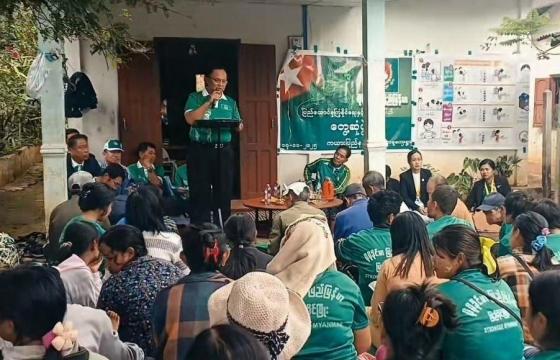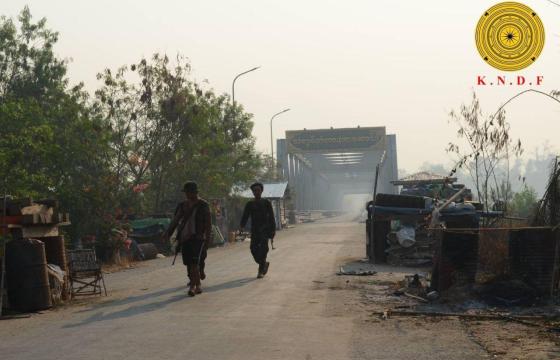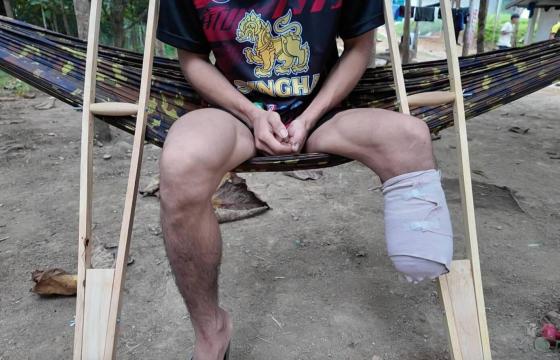BNI Editors Review Global Witness Investigation
A new report by Global Witness a UK-based research NGO shows that the world’s dependence on heavy rare earths from Myanmar’s conflict-affected Kachin state has rapidly increased, and is having a devastating impact on communities and the environment.
Myanmar’s lucrative trade in heavy rare earths is worth $1.4 billion in 2023 and most of the mines are providing a much- need source of income for the Junta’s desperate economic straits under siege from sanctions.
Since the military coup in 2021, extraction has rapidly expanded with loyal militia forces operating Kachin State Special Region No. 1. Imports of heavy rare earths from Myanmar to China - where they are processed - have more than doubled in the space of two years. From their previous high of 19,500 tons of heavy rare earth oxides in 2021, imports reached 41,700 tonnes in 2023.
As Global Witness notes in its report, increasing restrictions on rare earth mining in China have led to a huge shift to mining across the border in Myanmar, mostly to an area that has long been the personal fiefdom of Zakhung Ting Ying, an ex-Communist Party of Burma (CPB) commander who formed a pro-army militia, the New Democratic Army—Kachin (NDAK).
Myanmar is now the single largest source of heavy rare earth elements globally. Heavy rare earths are currently in demand as part of the global energy transition – they are vital ingredients for permanent magnets that are used in electric vehicles and wind turbines.
In Kachin Special Region 1, in areas controlled by militias aligned with Myanmar’s brutal military rulers, the number of mining sites has increased by more than 40%.Mine workers and local community members have reported and documented numerous health issues - including two deaths attributed to chemicals used in rare earth mining.
Water sampling data revealed that streams in Kachin Special Region 1 where mining takes place, are highly acidic and contain elevated levels of arsenic. Pollution is threatening to lay waste to a region regarded as a global biodiversity hotspot. The mining operations, located in Pangwa and Chipwe townships, are thought to be some of the largest rare earth mining operations outside of China.
The costs are felt by workers and the local population. Across the mining region, workers complain of coughing, numbness, skin conditions and kidney issues, all known health risks from the chemical cocktail used in the mines.
The Kachin Resistance KIO/KIA Also Accused of Collusion with Mining Groups
Global Witness also accuses the Kachin resistance of funding their anti-Junta movement with the “dirty money” derived from deals made with Chinese mining companies to operate inside KIA-controlled territory near Mansi township.The report admits the KIA area of mining has far smaller than the Junta- aligned militia.
Another major difference has been Kachin resistance response to community protests over the environmental and health costs of rare earth extraction.
In 2023 many villagers living in N’ba Pa and Ding Sing Pa, near Mai Ja Yang the second largest KIO controlled town, had staged an unprecedented series of protests over five months in opposition to the KIO administration issuing of flurry of new permits to allow rare earth mining operations.
General N’ban La, the Kachin Independence Organization (KIO) Chairman has informed villagers living in a stretch of the group’s territory near the Chinese border that rare earth mining projects that were slated to go ahead in their areas have been suspended on his order. Indeed KNG and BNI both reported this in 2023.
The announcement by N’ban La, the most senior official in the KIO hierarchy and a long time commander from the group’s armed wing, had marked a considerable victory of sorts for Kachin civil society who have struggled for years to convince the KIO not to expand rare earth mining operations in the thin strip of territory the KIO controls along the Chinese border, where currently many refugees and political dissidents have taken shelter.
Unfortunately the GW report does not seem to have given much kudos to the KIO efforts to suspend or regulate projects. nor have they investigated in detail about how many projects if any, remain suspended in 2024.
When contacted by Global Witness prior to publication, a KIO spokesperson said that they had placed “strict rules” on rare earth mining companies in order to protect the environment. However, local sources consulted by Global Witness were not aware of any legal frameworks put in place by the KIO to regulate the industry.
The one weakness of the Global Witness is the tendency towards lumping the Kachin KIA’s involvement together with the Junta’s ruthless exploitation of rare earth and other minerals in Kachin State, without a clear examination over how far the KIA leaders have gone along the path towards divesting themselves of reliance on the “dirty revenue” from rare earth pollution in line with their policy position.
General N’ban La made the announcement about the suspension of the rare earth mining operations while speaking on April 15 to a group of more than 1,600 villagers and farmers from N’ba Pa and surrounding areas who had come to Mai Ja Yang to raise their concerns, according to a local community committee member who spoke to the Kachin News Group (KNG).
“This is now finished, the chairman of the KIO, General Nban La, has completely stopped all the rare earth projects that are being prepared in the N’ba Pa area. More than a thousand people went to a meeting with him using their own cars and motorbikes” the committee member said. “After the general said that it was completely suspended we also expressed our gratitude,” the committee member added.
Damage to poisoning rivers arseni
To KIO local authorities in rare earth mining regions in Myanmar
Stop mining activities until safeguards in line with international standards are put in place that protect local communities and the environment from adverse impacts associated with rare earth mining .Work with civil society and local communities to develop regulations for responsible mining that benefits the people and protects the environment.
Militias and KIO
When contacted by Global Witness prior to publication, a KIO spokesperson said that they had placed “strict rules” on rare earth mining companies in order to protect the environment. However, local sources consulted by Global Witness were not aware of any legal frameworks put in place by the KIO to regulate the industry. On both sides, this largely unregulated mining is environmentally devastating, and the threat it poses to ecosystems and to human health is becoming ever more urgent.
https://www.globalwitness.org/en/campaigns/natural-resource-governance/f...






